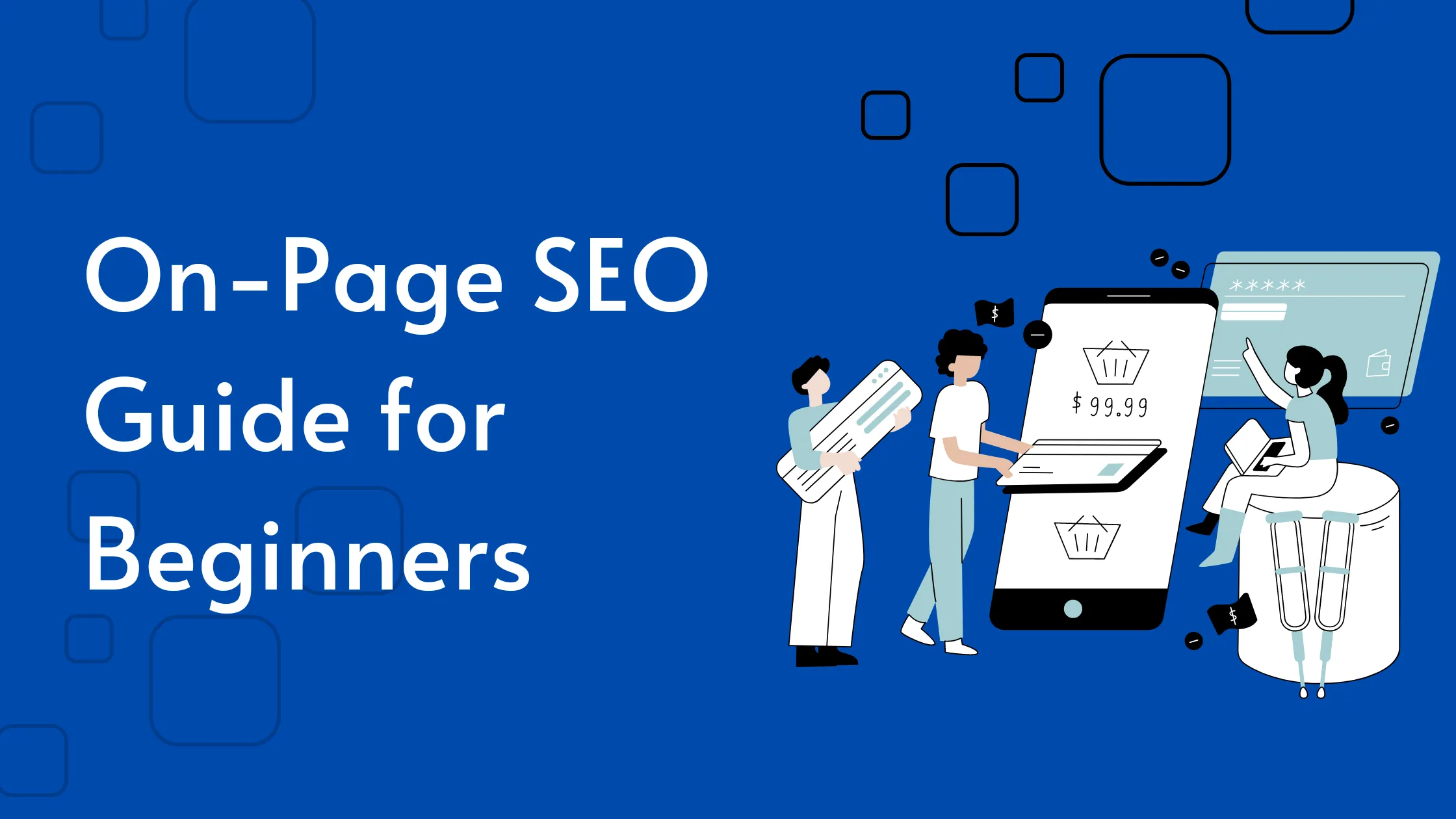If you are an SEO beginner, you might be eager to know how to rank on the first page of Google. But before we dive into the list of strategies, let us cover some basics. Starting with the primary question – what is SEO; you should know that it is an acronym that stands for Search Engine Optimization. That said, SEO is the process of improving your website’s ranking in Google’s organic search engine. The number one reason SEO is the best inbound digital marketing channel is that it revolves around intent. For instance, when someone types the best keyboards for your computer, the intent is evident as they move towards the base of the sales funnel and hence closer to becoming a customer. You get the point – the intent is why on-page SEO heavily revolves around optimizing pages for search intent. Nonetheless, on-page SEO optimization also includes creating and optimizing HTML tags, such as Meta descriptions and titles.
Understanding 4 Crucial SEO Pillars
On-site SEO can be divided into the following four pillars:
- Keywords
- Technical
- Content
- Backlinks Read on to get a detailed analysis of these four pillars.
Keywords
Simply put, keywords lay the foundation of any successful SEO campaign because keywords are what searchers use or type to find solutions to their potential problems. The underlying goal for your website is to pop up on Google for keywords that your target audience is searching for. That said, the first step for this pillar is to find keyword opportunities. This strategy depends to a great extent on the aspect of whether your business website has existing organic search traffic or not. You can find amazing online tools where you can enter your domain and assess whether you have existing keywords. If the answer is yes, then it already indicates that you are doing something correctly. In this case, you might want to determine those keywords that are positioned between two and fifteen. Depending on which SEO tool you use, you can find these keywords on the position tab. Now, these are the keywords that you will want to prioritize – because, with some simple optimization and possibly some backlinks, you can actually push those rankings up and successfully see a grand spike in organic search traffic. If you have a brand new website and hence don't have organic keywords, you might want to analyze your competitors' websites. You will need the right SEO tools to look up their top ten ranking keywords. The next step involves selecting the keywords that are actually worth targeting. While trying to select keywords, keep in mind the transactional intent that is positioned towards the bottom of the sales funnel. The best way to understand transactional intent is by knowing the five main categories of intent, which are the following:
- Informational
- Investigative
- Comparison
- Transactional
- Navigational That said, always start at the bottom of the sales funnel, and work your way up. Also, prioritize keywords with high transactional intent and low competition first.
Technical
Now that you might have found some awesome keywords, it is still not a guarantee for your site to rank, as you will need to optimize your website for technical performance. You may want to think of the technical pillar as the foundation of a house – it is required to improve organic traffic. You need to optimize three core categories to achieve optimal technical SEO performance. Firstly, you will have to ensure that your website is crawlable and indexable. That said, many aspects affect crawlability and indexability. Some of the biggest aspects include your website architecture, page experience, robots .txt file, and tags, such as noindex tags, which can prevent Google from crawling web pages. Now, you can find loads of SEO tools online to audit the crawlability of your website. The right kind of tool for SEO can show you all potential issues that can negatively impact crawlability. Again, the right SEO tool can help you see what hurts your indexation. Your job is to tackle these items as soon as possible because if Google cannot crawl your web pages, they won't be indexed. And if they are not indexed, they can't rank. Besides, you will need to optimize your website for the best user experience. One of the essential UX factors is page loading speed. In fact, Google recently contended that core web vitals is a crucial ranking factor. So, you need to do everything you can to improve the loading speed and page experience. The right SEO tool will allow you to see the exact pages that you need to improve. And the best part about optimizing your site for core web vitals is that most changes will have a positive impact on a site-wide basis, which means that you don't have to go page-by-page optimizing for core web vitals for most of your pages. Another technical pillow that you need to optimize for is your site architecture – or, simply put, internal linking. There are a few core principles of internal linking – the first principle is that your pages shouldn't exceed three clicks deep in your architecture. Else, it could potentially hurt crawlability and indexability. You might want to use the right SEO tool for site audit and assess the pages you will need to push further into the architecture. Another way to optimize your site architecture is to identify pages with poor internal link coverage. You might want to use an SEO tool to assess the internal link rank to gauge how much link equity and authority a particular page has. Suppose a page has many internal links from pages with many backlinks – in this case, the ILR score will be high. On the contrary, a low ILR score indicates poor internal link coverage. So, you might want to improve internal link coverage to boost on-site technical SEO.
Content
Once you have identified solid keywords and ensured that the technical performance of your website is on point, the next step involves optimizing your content and implementing effective content marketing strategies . This term refers to the scenario where you have two or more pages targeting the exact same keyword phrase. This aspect is detrimental to your SEO performance as it pushes Google to decide which page is best for that keyword. But, you don't want Google to make those decisions since it is your job to direct Google. The easiest way to assess keyword cannibalization is to use an SEO tool for keyword position tracking. Subsequently, you will also have to assess the web page and see whether it needs to be upgraded. Your SEO-driven web pages should be different and better than what existed before. When it comes to web content, you might as well assess whether the page is optimized well. For instance, your primary keyword should be in your URL, Title, H1 Tag, and the first and the last sentence when it comes to the basics. However, if you are truly looking for efficient ways to take things a notch higher, you might want to use the tool of an on-page SEO checker to optimize and boost your content. Another way to optimize your content is to assess your page and see whether it has enough internal link coverage. Make sure that your target page is getting substantial enough internal link coverage. Last but not least, assess the page for the need for more topical authority. If you detect that the page doesn't have enough link coverage, it is likely that it doesn't have much topical authority either. Simply put, you will need to create more keyword-driven content to support the primary asset. To boost your content and optimize it, you can also avail of the best cheap monthly seo plan .
Backlinks
The thing about backlinks is that since SEO has been in the game, backlinks are still the number one ranking factor. The more backlinks a domain has – the higher its position on the SERP. One important thing to remember is that not all backlinks are created equal. As a matter of fact, some backlinks can destroy your rankings and get you penalized. Before you start acquiring new backlinks, we recommend auditing your existing backlink profile with the help of the right SEO tool. If you assess a higher percentage of toxic domains, you might want to work towards acquiring higher-quality backlinks to counteract the low-quality backlinks. Simultaneously, if the backlinks are toxic, then you can try to get them removed through outreach. Nonetheless, you also have the option of disavowing the backlinks with Google. Still, you should know that it can harm your SEO performance as you may decrease the overall authority of your website. For this very reason, you will be actively required to keep working towards new backlinks, and while you are at it, you should aim to acquire backlinks on websites relevant to your website. For instance, if your website is about coffee beans, you should try to get backlinks from coffee or food bloggers. Also, you should aim to get backlinks from websites that are real websites with real organic traffic. Besides, the websites should be authoritative, and their backlinks should be high-quality.
Loading comments...

